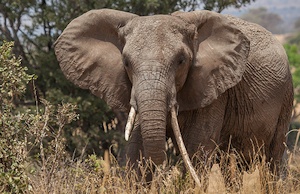 The Tarangire Ecosystem is on a land cover of nearly 7,700 sq miles and extends from the border of Kenya into the Masai Steppe. The eco system comprises of national parks which are Lake Manyara plus Tarangire. It supports great number of elephants, zebras plus wildebeests that move seasonally from the protected areas into surrounding village lands. In the dry months the wild animals gather around River Tarangire , which offers the sole permanent water within the region. Once the rains begin, the wild animals disperse to calving areas rich in minerals inside the Simanjiro plains and then to the east as well as all around Lake Natron in the north.
The Tarangire Ecosystem is on a land cover of nearly 7,700 sq miles and extends from the border of Kenya into the Masai Steppe. The eco system comprises of national parks which are Lake Manyara plus Tarangire. It supports great number of elephants, zebras plus wildebeests that move seasonally from the protected areas into surrounding village lands. In the dry months the wild animals gather around River Tarangire , which offers the sole permanent water within the region. Once the rains begin, the wild animals disperse to calving areas rich in minerals inside the Simanjiro plains and then to the east as well as all around Lake Natron in the north.
Fast Facts
Tarangire is among the finest parks across Africa where you will see large elephant herds.
Challenges
A growing human population is increasingly putting pressure on the wild animal migration corridors as well as dispersal areas beyond the national parks. 5 of the 9 major wildlife migration routes have vanished, while the others are undergoing an increasing risk from agricultural activities. Isolation of these two parks will result in a serious reduction of wild animal numbers.
Tarangire National Park is the 6th biggest national park within Tanzania following Ruaha, Mkomazi, Serengeti, Katavi as well as Mikumi. This national park is found in Manyara Region. The park’s name comes from the river Tarangire which runs across the terrain of the park, it being the sole source of water for the wild animals in the dry seasons. Throughout the dry season a large number of wild animals move to the Tarangire National Park crossing from Lake Manyara National Park.
It is found a smaller distance to the southeastern part of Lake Manyara and it covers an expanse of around 2,850 sq km (1,100 sq miles.) The terrain plus vegetation is amazingly diverse with a blend which isn’t seen in other places on the northern safari circuit. The terrain is hilly and dotted with numerous Baobab trees, bushes plus high grasses.
Flora and fauna
The park is renowned for its large number of elephants, tree climbing lions plus baobab trees. Visitors in the park should expect to see numerous resident zebras plus wildebeests along with the uncommon animals. Additional common animals include olive baboons, waterbuck s plus the giraffe.
Tarangire National Park is habitat to over 550 species, and it is home for those interested in bird watching who can look forward to seeing dozens of bird species even during the dry season. These swamps are where you will ever see the biggest variety of breeding birds all over the world. In the trees alongside River Tarangire the Yellow-collared Lovebirds is among the common bird you will see.
Additionally, the park is well-known for its termite mounds which are scarttered across the landscape. People who been deserted are usually seen to be habitat dwarf mongoose.


